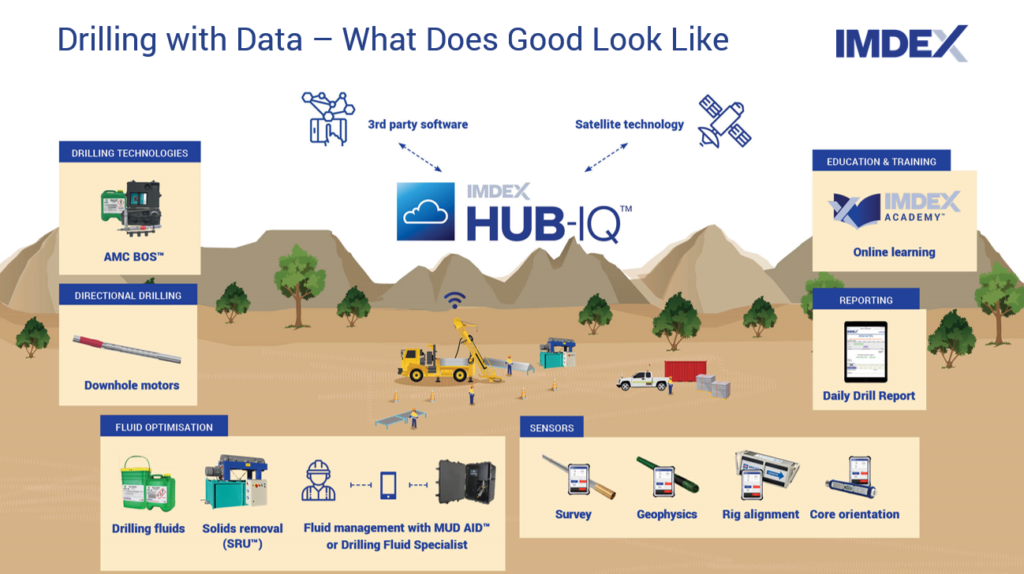As mining companies go further afield and explore under cover to replace diminished reserves, deep directional drilling on existing sites is increasingly becoming part of their campaigns, according to IMDEX.
There is plenty to consider before embarking on a drilling program, including traps in chasing the cheapest price if it fails to deliver, by not hitting the target.
IMDEX Global Lead, Directional Drilling, Kelvin Brown, and General Manager, Product Development, Dr Michelle Carey, discussed the issues in a recent webinar, ‘Directional Drilling: Strategies and technologies to stay on target and not blow your budget’.
Dr Carey said statistics revealed that directional drilling was increasing and is estimated to grow to around 20% of a drilling program.
“As we all know, it’s getting harder and harder to make discoveries,” Dr Carey said. “A lot of the reason for that is that increasingly we’re having to go under cover.
“What that means, in reality, is that instead of going into a greenfield site, people are going to their existing deposit to start drilling plans. Rapidly you find yourself in a situation where you are drilling quite deep holes, and you’re drilling quite deep holes where you have a target in mind.
“The other thing is the cost of drilling is going up, so we’re actually getting less bang for our buck.
“So really what we need are technologies and approaches that allow us to control cost as we drill deeper, and really balance out cost versus risk. It is not just about low cost – if it means you do not hit your target. It becomes increasingly important that we all know how to do it well.”
Dr Carey and Brown discussed a range of technologies and products designed to increase drilling productivity and efficiencies, including drilling fluids.
“There is an amazing amount of technology available now to help you in your cause of optimising your drilling program. It’s drilling with data,” Dr Carey said. “This is all technology that people have available to them now.
“In directional drilling, we offer downhole motors, one of a number of different technologies for directional drilling which has the combined advantage of flexibility and driller operability. You have got the fluids, which can be critical to how successfully your program runs and IMDEX MUD AID™, which allows you to monitor that.
“And, complementing the fluids, you’ve got a solids removal unit which, again, is optimising your fluid system, removing cuttings, things like that contribute heavily to how successful your drilling program is.”
The other critical technology in directional drilling is the survey tool. Brown said selecting the right survey instruments that could quickly provide the best data, faster, translated into a lower cost.
“The sooner you have it, the sooner you can make a better decision,” he said.
And, for Dr Carey, that means using the data to alter the drilling plan, if required, rather than “blindly going forward” with the initial plan.
“It’s incredibly important that you know when to pause when certain things happen and say, ‘here was our plan, but now we have some data and our plan has changed; let’s step back, plan again and go forward’,” she said.
Brown added: “You need to pay attention to the data. If the hole goes on and it is not going where it needs to go, it won’t fix itself.”
A good relationship with the drilling contractor is also essential, with Brown saying some contracts appear to have “punishment clauses” for failing to hit the target.
That approach has unintended consequences, according to Dr Carey.
“It actually causes people to cheat,” she said. To start manufacturing survey data to ensure they stay within the target zone and that is not the outcome you want.
“Another thing we do see sometimes is that people might have contracts put in front of them with what looks like an attractive rate for doing deep drilling and directional drilling; in fact it looks so attractive that you know they are not going to be able to get the job done for those price tags. Although it seems tempting to sign up to those contracts, you are not doing yourself any favours.”
Brown said: “Things look simple when everything is bundled into a cost per metre, but when it comes to directional drilling everyone needs to understand that there is a time component and you have to be conscious of that.
“If it is about hitting the target, it’s about hitting the target. There is no point having a cheap hole that misses the target.”











